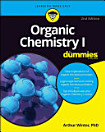Electrochemical Remediation Technologies for Polluted Soils, Sediments and Groundwater
Über dieses E-Book
Electrochemical technologies are emerging as important approaches for effective and efficient pollution remediation, both on their own and in concert with other remediation techniques. Electrochemical Remediation Technologies for Polluted Soils, Sediments and Groundwater provides a systematic and clear explanation of fundamentals, field applications, as well as opportunities and challenges in developing and implementing electrochemical remediation technologies. Written by leading authorities in their various areas, the text summarizes the latest research and offers case studies that illustrate equipment, installation, and methods employed in real-world remediations.
Divided into nine sections, the coverage includes:
-
Introduction and fundamental principles
-
Remediation of heavy metals and other inorganic pollutants
-
Remediation of organic pollutants
-
Remediation of mixed contaminants
-
Electrokinetic barriers
-
Integrated (coupled) technologies
-
Mathematical modeling
-
Economic and regulatory considerations
-
Field applications and performance assessment
Unique as a comprehensive reference on the subject, Electrochemical Remediation Technologies for Polluted Soils, Sediments and Groundwater will serve as a valuable resource to all environmental engineers, scientists, regulators, and policymakers.
Bewertungen und Rezensionen
Autoren-Profil
Claudio Cameselle is Associate Professor in the Department of Chemical Engineering at the University of Vigo, Spain. He received his undergraduate degree and his PhD in chemistry at the University of Santiago de Compostela, Spain. He then moved to the University of Vigo, where he has been working as a faculty member for the last fourteen years. He spent a sabbatical year as visiting professor at the University of Illinois at Chicago in 2008. His teaching activities are in the areas of chemical engineering and environmental engineering. In recent years, his research activity has focused on the development of electrokinetic remediation for the treatment of soils and sludges polluted with heavy metals and organics.





